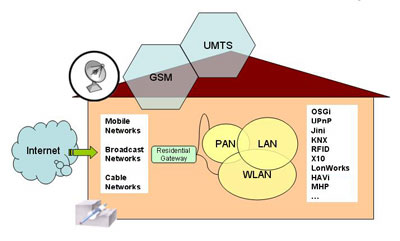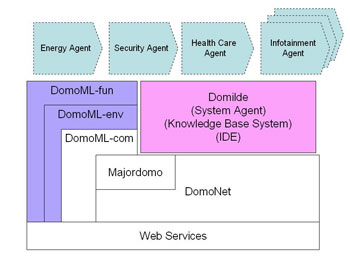|
|||||
NICHE: Natural Interaction in Computerised Home Environmentsby Francesco Furfari, Claudia Soria, Vito Pirrelli, Oreste Signore and Rolando Bianchi Bandinelli Future technologies will provide users with increasing control over surrounding devices embedded in a common home environment. Somewhat paradoxically, this could result in an increase rather than a reduction in complexity if support for high-level interfacing is not introduced. This concern prompted the launching of a medium-term project aimed at promoting natural user-home interaction along the lines of the Ambient Intelligence vision. NICHE (Natural Interaction in Computerised Home Environment) is a curiosity-driven project recently started in Pisa by ISTI-CNR. It was established on the basis of a collaboration between the Domotics Lab of the Institute, the Dylan Lab in the Institute for Computational Linguistics (ILC-CNR, also located in the Pisa CNR Research Campus), and the W3C Italian Office. The main research objective of NICHE is to address the interoperability and integration of home appliances with next generation smart devices (see Figure 1), taking into account the impact of new emerging technologies (AmI) on our daily habits.
A key tenet of our approach to the problem is the central role played by human language in mediating user interaction with the home environment. Through language, a user should be able to control, query and program devices by using his/her own most immediate and congenial communication medium. With recent improvements in computer and language technology, natural language systems begin to appear feasible. However, when it comes to human interaction with electronic devices and system agents, we must squarely face the challenging task of redesigning established practices and anticipating future user reactions and needs. Significant technical issues still need to be addressed before natural-language-driven interfaces become truly natural and conversational. For example, considerable care must be taken to avoid an intelligent system being perceived as an 'intrusive' or annoying presence (see ISTAG reports). Furthermore, we need a better understanding of the way humans and machines can communicate in the home environment. The development of a natural language-driven interface thus requires the preliminary definition of a cognitive model of user-home interaction. There are several goals in doing this: firstly, to precisely characterize the roles of those involved and the complexity of the tasks; secondly, to identify a taxonomy of intended devices; and thirdly, to identify those aspects that may affect the specifications of a 'dialogue manager', the 'intelligent' component that regiments the pragmatics of communication. A second key aspect of our investigation is the ability to capture the unlimited variety of home environments in an incremental way, that is, in their dynamically evolving aspects. Ideally, the user should be able to manage new devices, automatically discovered and integrated in the home system, and interact through the implicit context of each specific device. For example, when using a TV we would like to be able to use concepts such as 'film', 'actor' and 'talk show'. This would allow us to take full advantage of next-generation distributed smart services (Semantic web, MAS) and their potential for proactively offering user-tailored services at home. To date, the use of a semantic layer in the domain of networked home devices mainly concerns the specification of executed commands, the categorisation of available devices, and the mapping between different home protocols. We believe that recent developments in the Semantic Web research area should also be capitalised on to tackle similar problems within the semantic home intranet. This step is expected to offer the further bonus of making the home environment directly compatible with remote services.
Figure 2 outlines the overall NICHE software architecture. White boxes such as DomoNet (an XML-based middleware defining an abstract level whereby individual devices are represented and described as an overall integrated system) are background resources of the Domotics Lab, while coloured boxes represent the specific focus of the project work. In particular, we intend to release DomoML, a mark-up language intended to define a semantic layer on which novel value-added services (agents) can easily be built. Please contact: |
|||||




